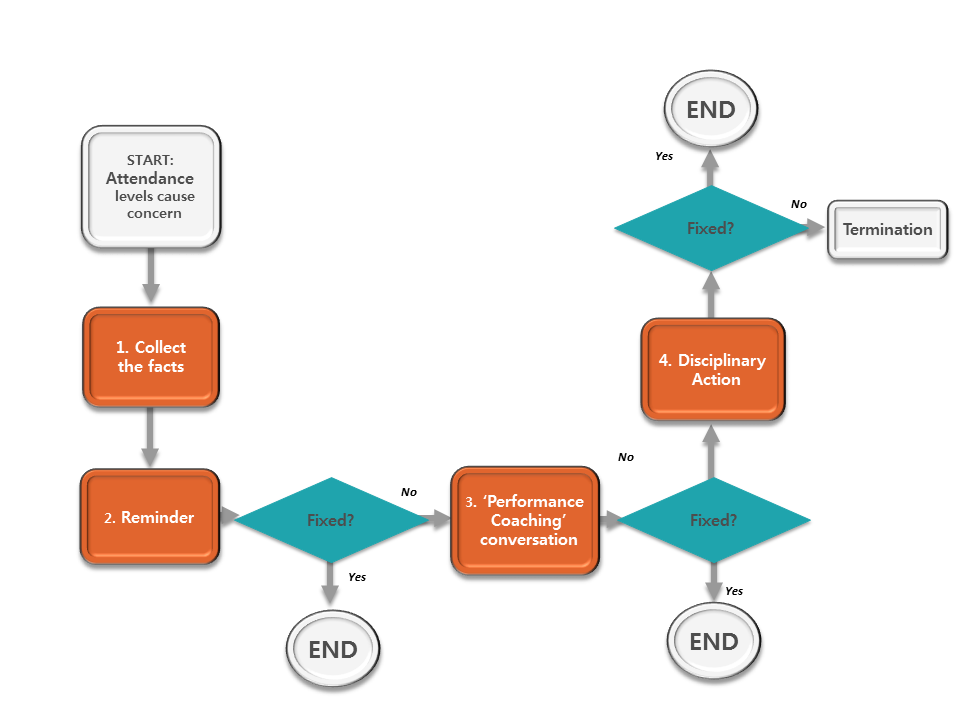Flowchart – Dealing with Absenteeism

Employees have an obligation not to be absent from work without good cause and promptly advise any absences. The burden of proof is on the employee to show that his/her absence is justifiable. Frequent absenteeism without reasonable excuse may be cause for dismissal. Even if the employee has valid reasons for the absences (ill health, family problems etc) this does not mean their absences cannot be challenged or that you can’t ask them to reduce their absences in line with their original ‘deal’ which was to attend work for the hours for which they are paid. The problem you face could include:
- Overall attendance unacceptable.
- Poor timekeeping .
- Exceeding leave entitlement.
- Suspicious pattern of absences.
- No notification of absence.
- Unsatisfactory reasons for absence.
Notification of absence Employees are expected to ensure that notice of their absence is given to their manager at or before the normal starting time on each day of absence. Furthermore, employees are required to provide a satisfactory reason for all absences. If you experience one or more of the above symptoms follow the steps below.
1. Collect the facts including;
- Times, dates, patterns?
- Triggering events?
- Was permission sought?
- Reasons given afterwards?
- Were our expectations made clear?
- What outcome do we want?
- Any other performance or behaviour issues?
NB: You are entitled to call and check that an employee who says they are at home sick is actually at home.
Has your Reminder worked? Note: Even if there is genuine reason for ongoing absence (i.e. ongoing health issues) that absence can still be grounds for you to terminate employment. (See Medical Incapacity guidelines). Take advice from your manager before proceeding.
3. If the issue continues its time to take a more formal approach (but probably one that stops short of discipline unless the absences are willful i.e. told they can’t have the day off but do so anyway). We use the Performance Coaching conversation plan to raise the issue, get agreement to improve and indicate that if improvement doesn’t happen disciplinary action will follow. Key elements in this approach are:
- Prepare by collecting facts.
- Review previous discussion.
- Indicate your continuing concern re: absences.
- Obtain explanation for latest absence(s)/issues.
- Seek agreement to improve.
- Discuss possible solutions to the problem.
- Indicate consequences of failure to improve (disciplinary action).
- Agree action plan for improvement (where appropriate).
- Informal reprimand if issue is a ‘won’t do’ rather can ‘can’t do’.
- Make a record of the conversation and its outcome.
If issues continue or reappear then its probably time for Disciplinary Process [typically beginning with Step 2 – advice of Disciplinary Interview]
If the problem is fixed acknowledge that to the employee but remind them the change needs to become permanent.